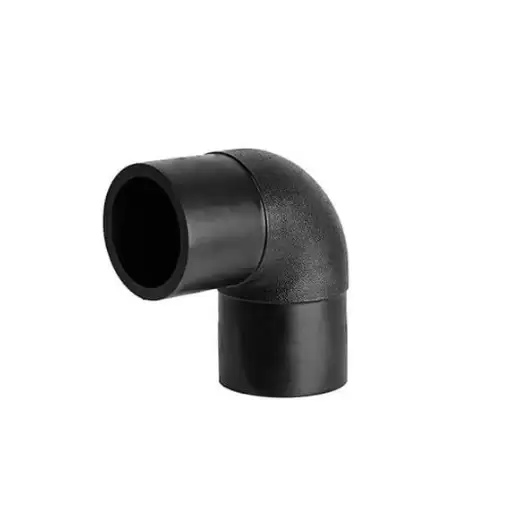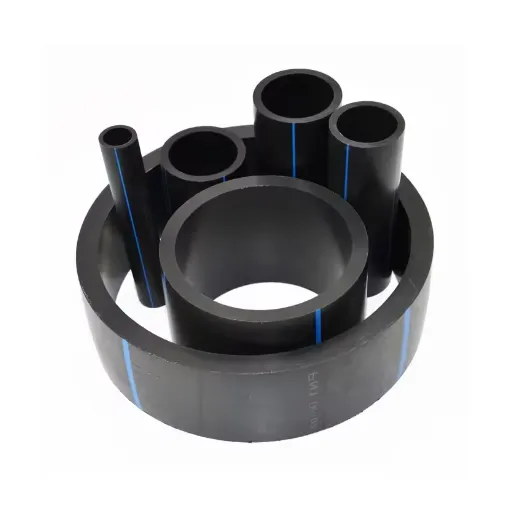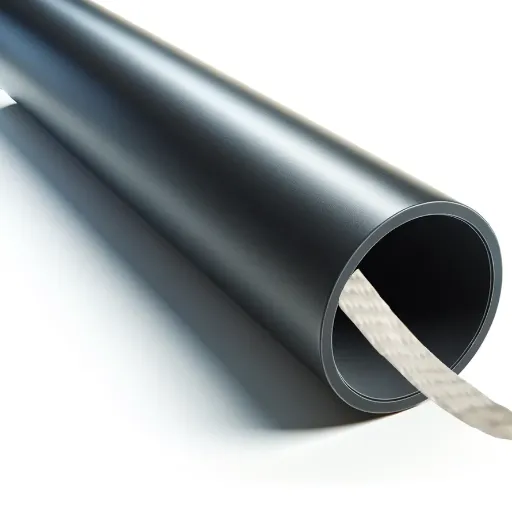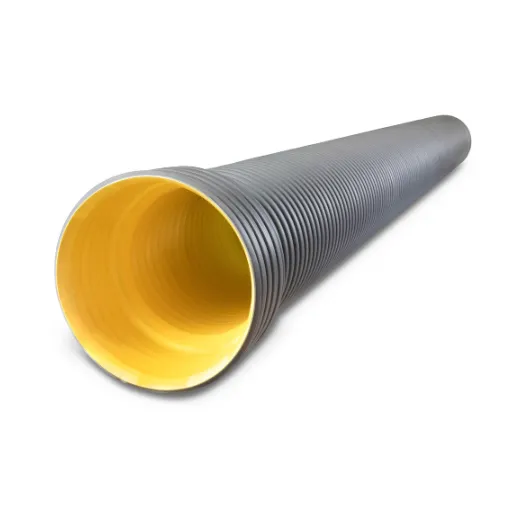High-Density Polyethylene (HDPE) pipe fittings have revolutionized modern piping systems with their durability, efficiency, and adaptability. Among these fittings, the butt fusion 90° elbow stands as a critical component, enabling precise directional changes in pipeline layouts without compromising the system’s strength or integrity. This article dives deep into the function, design, and applications of the butt fusion 90° elbow, uncovering its role in creating reliable and efficient HDPE piping solutions. Whether you’re an industry professional, engineer, or simply looking to expand your technical knowledge, this guide will provide valuable insights into how this specialized fitting contributes to the resilience and versatility of HDPE piping networks.
Applications and Benefits of 90° Elbow Fittings
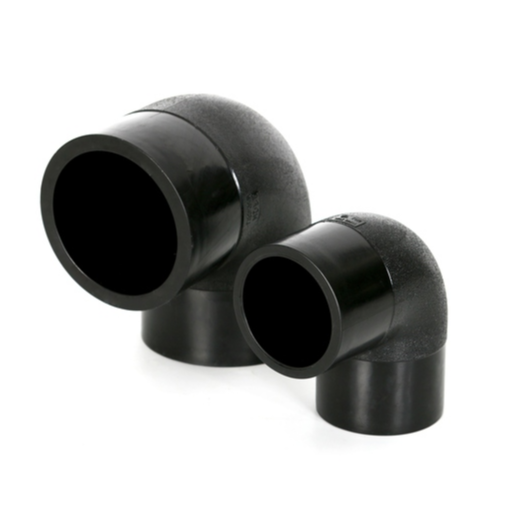
Versatility in Plumbing
Butt fusion 90° elbow fittings are a crucial component of today’s plumbing systems because they enable smooth directional changes in an HDPE piping arrangement. The designs are intended to uphold an almost uninterrupted flow pattern, wherein fluid resistance is minimized, and the pressure drop across the system is the least. This makes it convenient in various residential, commercial, or even industrial applications where intricate piping layouts are involved.
A few benefits of using elbow fittings for 90° directions in plumbing would be their adaptability to different HDPE pipe sizes and specifications. This setting allows for customized and smooth installation, essential when working in tight spaces or unique routing scenarios. Providing additional benefits for the fittings, HDPE offers corrosion, chemical, and environmental stress resistance, which results in a longer lifespan when compared to other materials like metals or PVC.
The butt fusion technology provides an additional advantage to these fittings by ensuring a joint as strong as the pipe itself, leaving no possibility of leaks or joint failures even under high pressures or difficult environments. This reliability, coupled with easy installation and maintenance, definitely renders the 90° elbow fitting suitable for multiple applications across various plumbing projects.
Construction Industry Uses
In construction, 90-degree elbow fittings are popularly used for their ability to make a smooth flow transition for liquid or gas within a piping system. This type of fitment is essential where space restrictions need flow directions through plumbing, HVAC, or even fire sprinkler networks. Their application ensures that materials are transported efficiently, even through a complex design.
Some advantages 90° elbow fittings possess for use in construction include compatibility with various materials ranging from PVC to steel or copper. This increases their adaptability for systems dealing with everything from potable water to industrial waste. Reliability at high pressure and endurance against environmental attack bode well for their long-term performance, casting austere pressure on replacement or repair.
Moreover, ease of installation through butt fusion or threading enhances the working efficiency tremendously. These joints will be strong and leakproof, and certainly one of the most cost-effective ways to construct projects, whether large or small. In addition, their greatness in the structural as well as in the mechanical field will always be acknowledged in modern construction areas.
Industrial Piping Systems
The industrial piping system can transport liquids, gases, and other substances in a range of environments, including manufacturing plants, chemical processing plants, and refineries. These piping systems essentially give a controlled and secure means of transfer, ensuring operational efficiency and safety of the system. The choice of piping materials such as steel, PVC, or HDPE is made based upon considerations like physical strength, corrosion resistance, and compatibility with the substances to be transported.
A major consideration for industrial piping systems is their proper design and installation. The pipe diameter, operating pressure, temperature, and fluid characteristics all must be considered to prevent inefficiencies or failures. Using advanced tools and techniques, engineers may model their conditions and assess system behavior for optimum performance before installation, which eventually lowers the risk of downtime or repair. The piping systems also must be in compliance with standard codes and regulations to guarantee safety and environmental consciousness.
Maintenance of any system is a key task for industrial piping systems. It has to be well inspected on an ongoing basis with monitoring in place to identify potential problems such as leaks or corrosion, pressure imbalances, and so forth, before they turn into major ones. Enhancing the predicted maintenance system through IoT sensors and inline monitoring will enhance the life and reliability of the system. Robust design coupled with proper installation and assessment allows industrial piping systems to serve effectively and safely in many industrial applications.
Step-by-Step Guide to the Butt Fusion Process for 90° Elbow Fittings
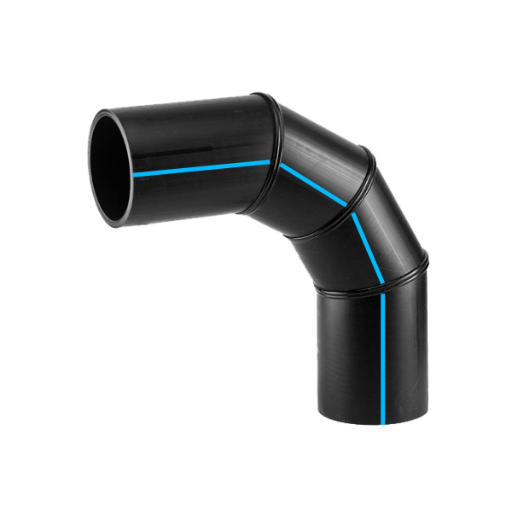
Preparation for Fusion
A safe, strong, and durable fitting joint may be kept in the fusion process. Preparation is one of the important stages in the process with 90° elbow fittings. One begins by inspecting if the pipe ends and the fittings are free from contaminants such as dust, dirt, grease, or moisture. A clean surface almost always means perfect fusion without any imperfections.
Next, pipe and fitting ends are to be aligned very accurately so that stresses developing along the joint are minimized for the even heating of the joint during fusion. Alignment clamps or fusion machines may be used to achieve precise alignment.
The ends are then trimmed with a pipe cutter or facing tool to obtain clean and square edges. Perfectly trimmed edges are integral to ensuring uniform surface contact, which, in turn, affects the integrity of the joint. This is the time to measure and check the ovality and wall thickness of the pipe for its conformance to the industry standards.
In addition, the surfaces to be fused should be thoroughly cleaned with an approved solvent, such as isopropyl alcohol, to wipe out any possible traces of contaminants. These steps, followed by appropriate working procedures, will put one on the road to success for fusion and the structural integrity of the piping system.
Equipment Setup and Welding Techniques
A proper setup of equipment is essential to producing welds that are of high quality, conform to industry specifications, and assure long-term performance. The machine should have its welding thermoregulation, pressure, and timing set by the manufacturer’s instructions. The operators should look over all fusion equipment, including the heaters and controls, for any indication of malfunction, residue buildup, or calibration defect before the initiation of the welding procedure.
The pipe ends should be well aligned during the welding operations by the use of heavy-duty alignment clamps to avoid axial misalignment. This is necessary to prevent stress concentrations that will eventually become structural failures. The heating plates are then heat-treated to temperature ranges generally between 390°F and 450°F for thermoplastic materials such as polyethylene and applied mutually on these surfaces for a uniform melt pattern.
The fusion pattern should be carefully observed during the fusion process for proper bead formation, which is an indication of proper bonding of the materials. After heat application, the pressure must be applied to interlock the materials on their molecule in a very controlled manner during the cooling period to fully cure the weld.
Cooling and Inspection of Welds
Cooling represents a crucial phase in the welding process, as the long-term integrity of the bond depends on it. After fixing through application of pressure, the joined materials must be cooled under controlled conditions so that residual stress may not be introduced or defects shall not be generated. The pressure maintained during the pressing phase shall not be dropped during the cooling phase until the weld solidifies completely. Cooling time depends upon the material type, environment, and thickness; however, ensuring that the weld has gained ambient temperature before further handling or stress testing shall be a must.
Testing follows the cooling operations, and it is done by combining visual inspection with certain non-destructive testing methods. A visual inspection includes examining the weld bead for evenness, absence of voids, and correct alignment. Undercutting and misalignment of the impression are some of the most common problems, and the performance of the weld can be affected by such defects. Employing other non-destructive testing methods, such as ultrasonic or radiographic inspections, could help determine the nature of internal imperfections and irregularities that cannot be seen on the surface. These inspections are equally effective in ensuring that the welds meet technical specifications and quality standards.
In short, I would ensure that, during the cooling phase, the weld cools evenly and the pressure remains constant throughout this phase. Once cooled, I would check the weld straight away by visual inspection, ensuring the bead is uniform, and use more advanced testing techniques to inspect it for subsurface flaws, so as to guarantee that the weld meets the required standards.
Common Challenges and Solutions
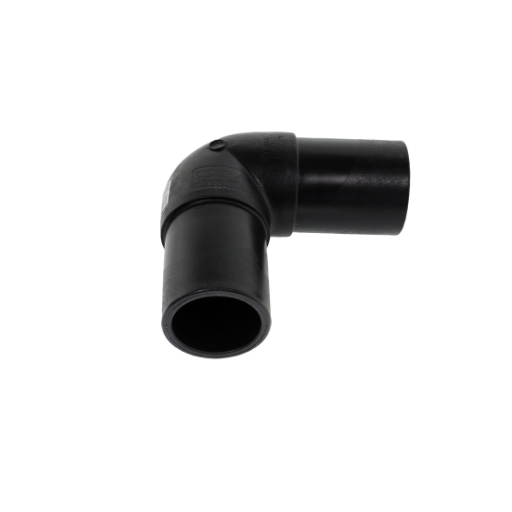
Alignment Issues
During welding, a very common issue faced is alignment, as it does indeed compromise in case misalignment of the welding processes operational strength and functionality of the final assembly. Misalignments may arise due to variations in component tolerances, ill-designed fixtures, or thermal distortion during the welding. Such things lead to improper load, premature wear, and even failure under operational stresses.
Alignment issues can be prevented by using precisely engineered fixturing systems. Advanced fixtures may operate and monitor in real-time to adjust the alignment throughout the welding process. Modern laser alignment tools allow the initial positioning of the components with high accuracy so that alignment mishaps become minimal. Also, preheating techniques can help lower thermal stress and distortion during welding, thus enhancing alignment.
Computer-aided modeling, such as finite element analysis, is generally useful to allow accurate data tracking and analysis of stresses and resolution of alignment problems beforehand. Regular inspection may be undertaken to keep the product and alignment within specifications, with non-destructive methods ranging from ultrasonic to radiographic testing. The combined use of “advanced models”, precision control, and diligent inspection shall go a long way in addressing alignment problems to ensure a continuous, high-quality result in industry welding operations.
Improper Heating Problems
Improper heating during welding restrains the welding from achieving the integrity of quality, strength, and endurance. The improper application of heat to the handling of fabrication works- either too little or too excessive- brings in material defects of all kinds through cracking, warping, or distortions in the weld zone. Unequal heating produces thermal stresses, which develop failure zones as time passes. For example, insufficient preheating causes high-carbon steel to favor hydrogen cracking since hydrogen gets trapped in the weld. The opposite scenario of overheating the weld platelet is caused by grain coarsening of the heat-affected zones, therefore affecting the mechanical properties and stability of the material in the long term.
To meet welding integrity, however, proper thermal control measures must be deployed. The application of adequate thermal control can be achieved through temp monitoring apparatuses, e.g., thermocouples or infrared thermometers. Furthermore, preheating and post-weld heat treatments may be considered so that thermal gradients and residual stresses are minimized, promoting better metallurgical bonding. An alternative would be advanced welding processes, such as laser welding or electron-beam welding, which provide better control of heat delivery, thereby decreasing defects caused by heating irregularities.
Advances in both research and technology on heat management have provided insight into how improperly heated problems might be alleviated. For example, Computational welding mechanics modeling can predict the results of heat flow of complex multi-pass welds and allows optimization before implementation by the engineer. The combination of these advanced simulation tools, together with in-situ monitoring methods, such as real-time thermal imaging, constitutes a framework accounting for improper heating defects. By applying these concepts to welding procedures, the industry has forged a path towards improved weld quality performance alongside stringent quality and safety specifications.
Effective Solutions for Successful Fusion
Successful fusion welds are achieved by embracing a multidimensional approach that incorporates advanced technologies, alongside tight parameter control and quality assurance. The appropriate selection of filler materials is made primarily to ensure metallurgical compatibility and mechanical properties under operating conditions. Modern computational modeling systems predict thermal effects imparted by welding, residual stresses, and distortions with extreme accuracy, thus limiting or altogether preventing weld defects.
High-tech welding processes preserve the aforementioned control of heat inputs with deep penetration and negligible heat-affected zone (HAZ), yielding better joint characteristics than others. Adaptive control systems help address various process issues by utilizing various sensors which monitor heat distribution, arc stability, and material flow to make real-time adjustments that help avoid occurrences, undercutting, porosity, or inclusions.
Execution of post-weld operations such as stress relief or NDT evaluations like ultrasonic or radiographic testing confirm adherence to standards and increased service life in further critical applications. Thus learned application assures manufacturing industries of high-quality defect-free fusion all-round, catering to needs of aerospace, automotive, and energy production domains.
Quality Control in Butt Fusion
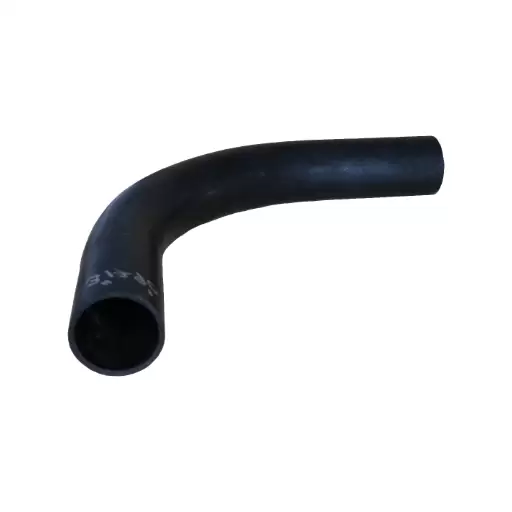
Best Practices for Ensuring Weld Integrity
Weld integrity in butt fusion operations exists by making sure proper, systematic procedures are followed alongside upgraded technological procedures. First, the material is set for welding; surface cleaning and alignment are necessary to form a good weld because contamination and misalignment are some of the primary reasons for weld weakness. Then, the correct welding needs to be chosen to suit the material and engineering standards. This involves the right temperature, pressure, and heating time.
Monitoring atrocities in welding cases, through data acquisition systems and advanced sensors, makes the detection of any anomaly instantaneous. Laser weld monitors and thermographic analysis have given an advantage of measuring temperature variations with greater accuracy, hence ensuring weld consistency. Apart from this, from the application angle, modern non-destructive testing approaches like phased array ultrasonic testing (PAUT) and computed radiography (CR) give a thorough integrity analysis without damaging the structure involved.
The adoption of these practices, integrated with industry-specific standards such as those maintained by the American Welding Society (AWS) or ISO standard, ensures compliance and worthwhile quality assurance. By combining cutting-edge technology and rigorous processes, manufacturing industries are able to provide defect-free welds that enjoy further service reliability, in line with the requirements of critical sectors such as aerospace, transport, and energy.
Tools for Verification of Connections
A robust suite of hard tooling and methodology is employed for verification of connections in manufacturing to ensure utmost accuracy and adherence to the rigid standards. Commonly employed NDT methods include UT, RT, and magnetic particle testing. These methods inspect weld integrity and weld quality without destroying the weld. The flaw-detection techniques can help locate inclusions, internal defects, discontinuities, or internal weaknesses that might degrade weld performance under imposed stress.
Next-generation inspection technologies, however, usher in a new era with PAUT and ADR for greater accuracy in data collection and the ability to peer deep into the component. Both tools provide accurate real-time images and measurements, the final criteria required for the detection of minute defects capable of compromising a component bearing some intricate geometry. Adding to this, modern software systems that utilize machine learning and AI algorithms are now being introduced to the inspection process to assess patterns of data emanating from testing equipment and hence are able to better recognize, classify, and distinguish defects, compared to human operators in any traditional manner.
A combination of these precision tools, together with tried and tested standards such as AWS D1.1 or ISO 5817, constitutes an effective quality control mechanism within the industry to assure connections are in accord with highly demanding criteria of critical industries such as structural engineering, aerospace, and energy, where there exists no tolerance for failure.
Maintaining Durable and Leak-Free Connections
A multifaceted approach to construction, involving selection of materials, compatibility of construction processes, and testing post-assembly, ensures connections that are strong and leak-proof for industrial uses. The life cycle and reliability of joints depend a lot on the right materials used for the application in considering the weathering component: corrosive environment, variation in temperature, intensity, or mechanical forces. For example, stainless steel alloys valued for their corrosion resistance and strength are often selected for the piping systems subject to chemical processing and offshore applications.
Any fabrication process with any kind of shortcuts from the prescribed joining process of welding, brazing, or mechanical fastening is liable to introduce defects an,d hence, uncertainty about the reliability of the components. Sound testing methods such as ultrasonic testing (UT) and radiography (RT) are critical to assessing the integrity of the connection, as well as being common methods used to detect internal discontinuities such as voids, cracks, lack of fusion, and so on.
To minimize risk, each stage must strictly follow industry-recognized standards, such as ASME B31.1 for power piping or API 1104 for pipeline welding. Such standards offer detailed requirements dealing with design, installation, and quality assurance. Further to the standards and through maintenance inspections, advances in NDT techniques, such as phased array ultrasonic testing (PAUT), can help detect early-stage wear or deterioration to prevent failure from actually occurring.
Thus, by combining engineering precision, stringent testing, and following standards, industries can assure long-lasting, leak-free connections in various severe applications.
Practical Tips for Selecting Materials and Tools
Choosing the Right Pipe Material
Choice of pipe material is critical for performance and durability and for meeting operational standards across various industries. Depending on the application, the material transported, operating conditions, and safety requirements, it is mainly chosen. Important considerations are the pipe’s resistance to pressure, temperature, and chemical corrosion, mechanical strength, and life-cycle cost.
For instance, stainless steel is the preferred material in situations where corrosion and strength resistance are in high demand in food processing or chemical plants. PVC and HDPE present low-cost, lightweight, and corrosion-resistant solutions for low-pressure water or drainage systems. Also, carbon steel is widely used for the mechanical properties it offers in high-pressure industrial applications, even though it needs coatings or linings to protect it from corrosion in the aggressive environment.
Furthermore, assessing thermal conductivity, pipe wall thickness, and joint compatibility must also be done to ensure integration into the system. Knowing the operational requirements and having material information from various standards such as ASTM and ASME allows engineers to choose materials that maximize operational performance and safety over time.
Fitting Specifications to Consider
Fittings for piping systems, as it were, must meet some crucial technical specifications to ensure compatibility as well as dependable performance. Encapsulated among these specifications are the following: composition of material, pressure ratings, temperature tolerance, and dimensional standards. Metallic fittings, like lacquered or carbon steels, must be looked into for grade and alloying elements, as these affect their corrosion resistance, tensile strength, and ductility. Non-metallic ones, like PVC or CPVC, must be interrogated chemically for compatibility and UV resistance for outdoor use or in industries with heavy chemical applications.
Then there is the connection type to consider, as it has a direct bearing on the expediency or otherwise of installation and the system’s integrity. These include threaded, welded, or flanged, among others whole gamut of avenues to be traversed, each with its pros and cons. Welded ones, for instance, can offer better leak resistance and mechanical strength and are thus preferred for high-pressure applications. Threaded ones provide greater convenience of assembly, being more disposed to leakage when subjected to sufficiently high stresses. Dimensionally, the fittings should be made to standard, be it ASME B16.9 or ASME B16.11, so that there is proper fitment and less stress on the system.
Furthermore, all given must be set in an engineer’s mind. Hence, he should consider the nature and properties of the fluid or gas to be transported, and a selection must be made accordingly. One should put forth viscosity, abrasiveness, and chemical activities into consideration. The application of advanced simulation tools modeling as well as the recognition of institutional and best practice techniques would indeed go much in foreseeing system behavior and, in turn, provide the lead to the selection process for maximizing efficiency, longevity, and safety.
References
Frequently Asked Questions (FAQ)
Q: What is a Butt Fusion 90° Elbow?
A: A Butt Fusion 90° Elbow is a fitting used in piping systems that allows for a change in direction at a 90-degree angle. It is typically made of HDPE (High-Density Polyethylene) and utilizes the butt fusion process to connect two pieces of pipe securely.
Q: What is the purpose of a 90 90-degree elbow in piping systems?
A: The purpose of a 90 90-degree elbow is to redirect the flow of fluid or gas in a piping system. It is essential in various applications, including water distribution, drainage systems, and industrial processes, ensuring efficient movement of materials.
Q: What materials are used in the construction of Butt Fusion 90° Elbows?
A: Butt Fusion 90° Elbows are primarily made from HDPE, specifically using PE 4710 domestic resin for enhanced durability. This material is known for its resistance to chemicals and impact, making it suitable for various applications.
Q: How is an IPS 90-degree elbow different from a standard elbow?
A: An IPS 90-degree elbow is designed to fit with IPS (Iron Pipe Size) systems, while standard elbows can vary in sizing. The IPS 90-degree elbow specifically conforms to the dimensions and specifications outlined in industry standards, ensuring compatibility with other IPS components.
Q: What are the benefits of using HDPE molded butt fusion 90 fittings?
A: HDPE molded butt fusion 90 fittings offer several benefits, including improved flow characteristics, reduced leakage potential, and enhanced resistance to environmental stress. These fittings are also lightweight and easy to install, making them a preferred choice in many piping systems.
Q: How long does it typically take to receive Butt Fusion 90° Elbows after ordering?
A: After placing an order for Butt Fusion 90° Elbows, it usually takes a few business days for processing and delivery. This timeframe can vary based on stock availability and the specific manufacturer, such as Georg Fischer or Central Plastics.
Q: What standards should I look for in Butt Fusion 90° Elbows?
A: When selecting Butt Fusion 90° Elbows, look for compliance with industry standards such as ASTM D3261 and AWWA C906. Additionally, ensure that the product meets NSF61 certification for potable water applications, ensuring safety and reliability in use.
Q: Can I find different brands of Butt Fusion 90° Elbows in stock?
A: Yes, there are multiple brands of Butt Fusion 90° Elbows available in stock, including AGRU, GF, and other manufacturers. It’s advisable to check with suppliers to see which brands are available for your specific project needs.
Q: What solutions does Butt DR11 – Poly Pipe offer?
A: Butt DR11 – Poly Pipe solutions provide a robust and reliable option for various piping applications. These pipes are designed for high-pressure environments, offering excellent resistance to environmental factors and ensuring longevity in service.
Q: How do I choose the right Butt Fusion 90° Elbow for my project?
A: To choose the right Butt Fusion 90° Elbow, consider factors such as the pipe size, material compatibility, pressure ratings, and specific application needs. Consulting with a business partner or manufacturer can also help ensure that you select the best product for your requirements.



